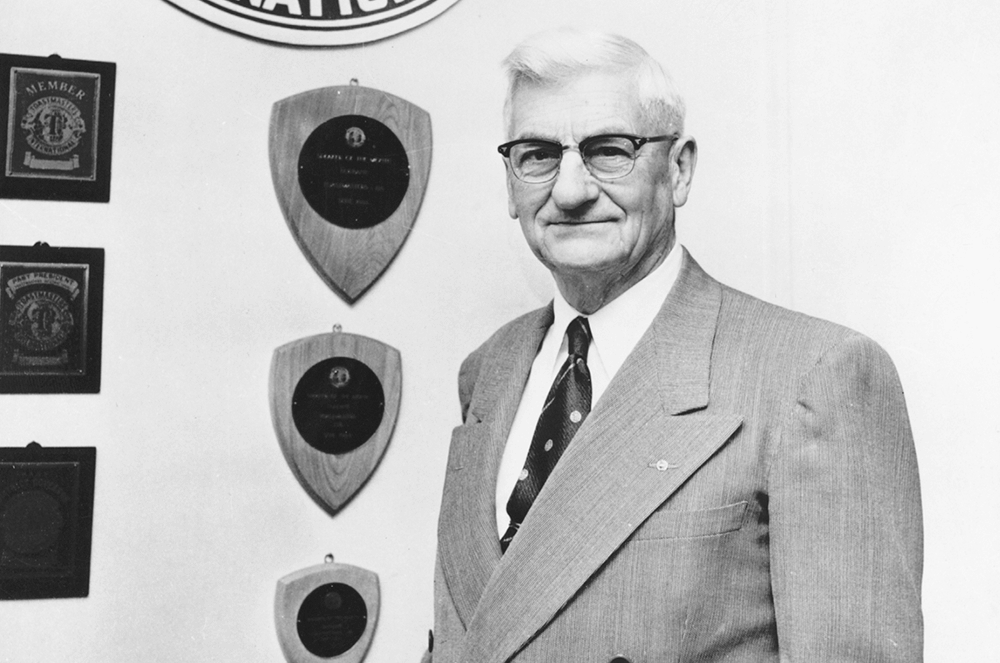
If you aspire to be a popular speaker, you will have to learn to tell stories. Even the most serious speaker needs to be able to light up his discourse with occasional flashes of wit and humor, which may or may not be provided by the use of stories, and so the answer to the title question must be in the affirmative. You must tell a story now and then.
This brings up several important questions. When should you tell a story? How should you tell a story? Where can you find good stories? How can you remember the stories after finding them?
When?
The time to tell a story is the time when it is appropriate. Just to drag in a story for the sake of telling it is not good. Unless it adds to the effect of your speech, it is a waste of time.
There are at least three occasions when a story is appropriate.
First, to put over an argument without using a whole chapter of serious talk. Consider how effectively Abraham Lincoln used homely stories, usually with the result that an argument was refuted or a point illuminated with very few words.
But the story must be pertinent. It must bear directly on what you are saying. An “illustration” must illuminate. An inappropriate story may raise a laugh, but it weakens your speech.
Second, to keep your speech from growing too serious, too intense. The grave-digging scene which opens the fourth act of Hamlet is a good example. Shakespeare deliberately introduces the clowns to relieve the tension of tragedy. It is an excellent speech technique—if well handled.
Third, to catch the attention of the audience at the start of your speech, and to establish a desirable rapport, which can lead naturally into attentive listening. This is not always the best practice, and if used at all, it must be with discretion and good judgment.
How?
Tell the story well. That is the universal and imperative rule.
You must know the story perfectly. You must have its procedure and its point thoroughly in mind, and you must have learned, by experience, what is the best way to put it over.
A story is well told when it is condensed into brief form without losing the effectiveness of its point. Too many details will kill the best story.
The more naturally it can be woven into your speech, the better. Too much preliminary explanation or introduction will ruin the effect. If you can make it appear to be an essential part of your speech, it will be much stronger than if you have to bring it in with “That reminds me of a story I once heard,” or some such cliche.
Where?
The very best place to find stories and illustrations is in your own experience.
Things that happened to you and can be told in first person are good material. They have the added advantage that they are your own, so no one else can use them.
You can test every story in your repertoire by these simple standards:
1 Is it likely to prove objectionable to anyone?
2 Is it clean and decent? Shun anything that has even the slightest suggestion of being off-color.
3 Does the story amuse you after the fourth or fifth time? Or does it lose its effect? If you don’t enjoy it, your audience will not care for it either.
4 Does it have a point which is clear and unmistakable—and worthwhile?
5 Can you tell it well?
Remember?
You run across a good item in your reading. But you fail to clip it or make a note of it, and when you want it, it is gone from your memory. The moral is, don’t depend on your memory alone.
Keep a notebook or a file of cards for this purpose. When you need an illustration, go to your collection and find it.
Many good storytellers use catchwords to suggest stories. Thus, if something is said about education, or about criticism, or about errors in grammar, or automobiles, or apples, the word brings an appropriate story to mind. Hang your stories on such catchwords and you will remember them.
Summary
Decide when and why you need to tell a story, what effect you want to produce, and what story fits the occasion. Then prepare carefully to tell it in the best possible style. Don’t tell too many jokes, and when you do tell one, make it count.
Editor's note: The original article appeared in the April 1947 issue of The Toastmaster.
Related Articles

Storytelling
Storytelling Tips From Contest Winners

Toastmasters History



 Previous
Previous

 Previous Article
Previous Article